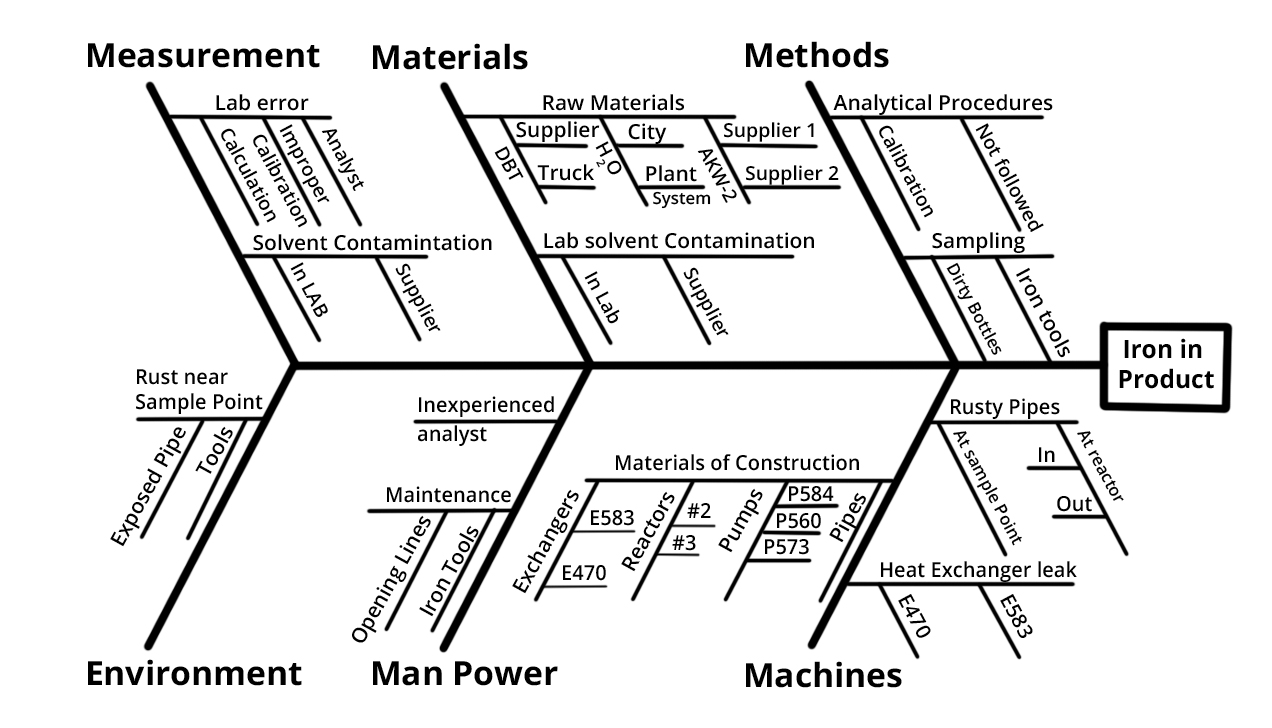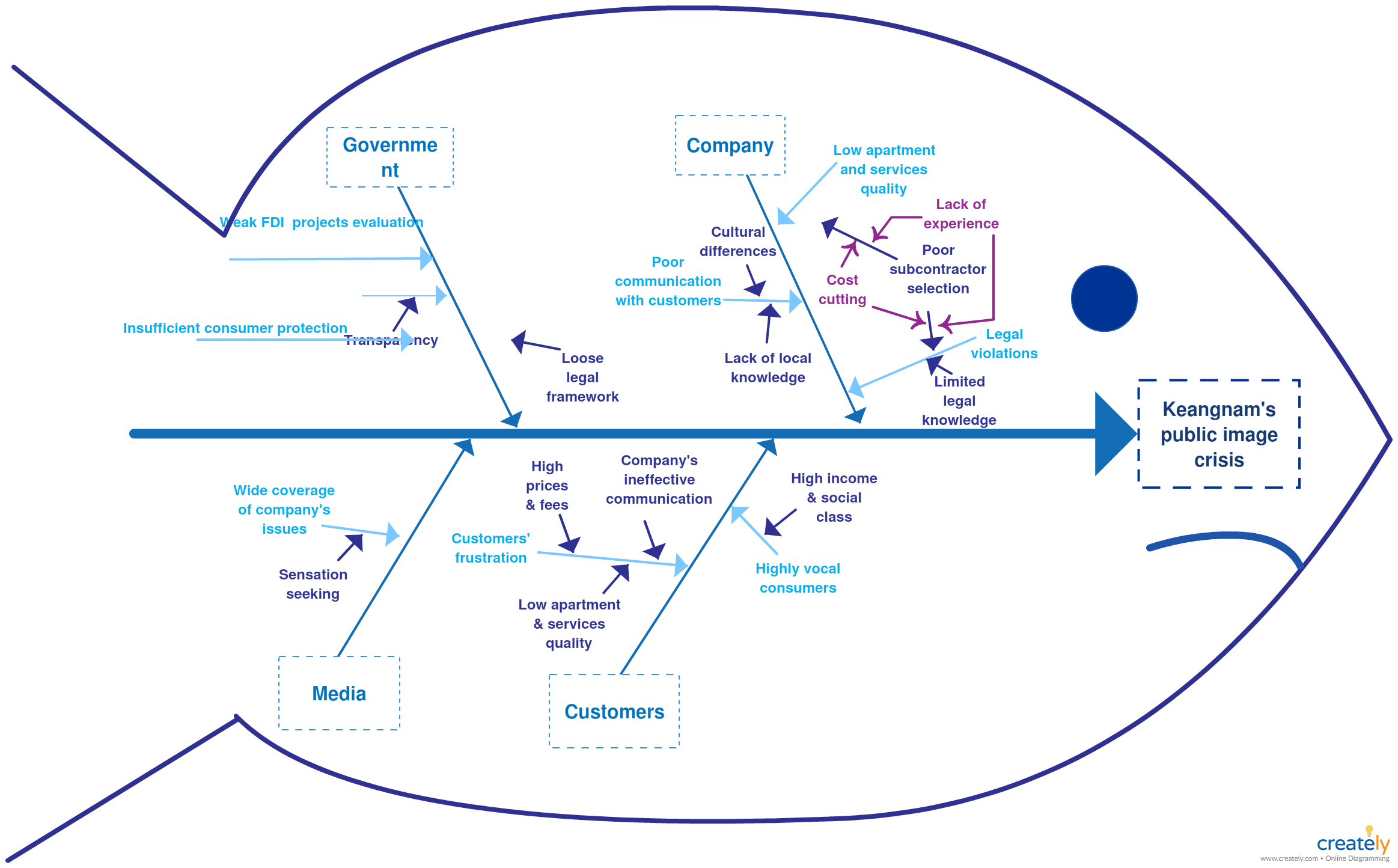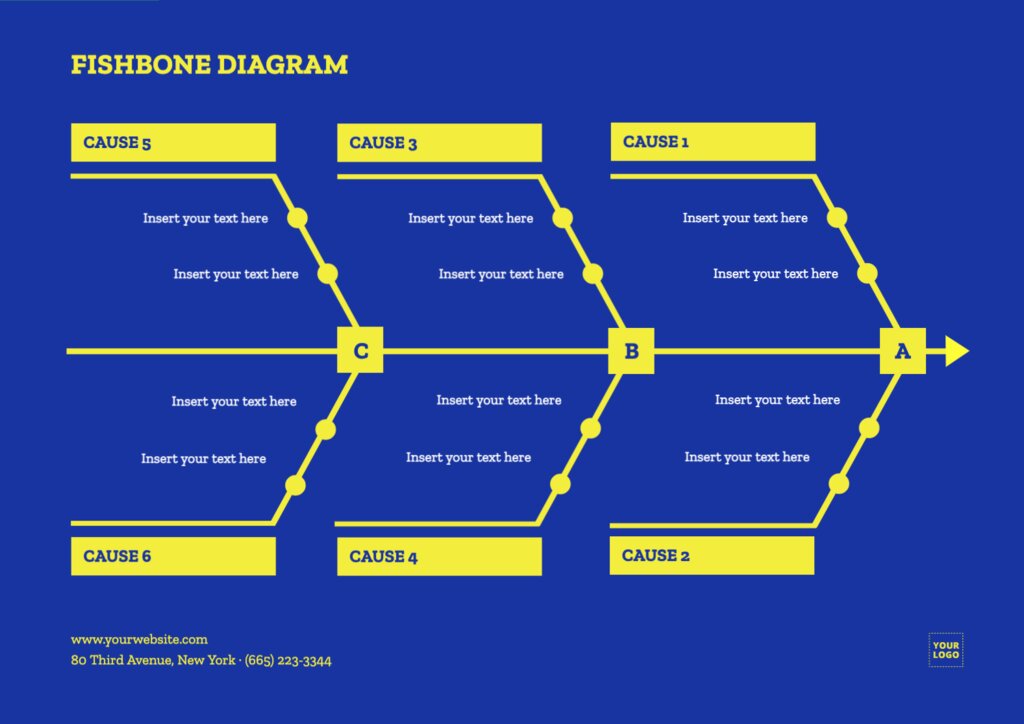
After you collaborate on this template, your team will be ready to start working on solutions. Try voting on which root causes are most likely to have the biggest impact or are easiest to address, and use Lucidspark Cards to follow up on any action items you discuss.

Ishikawa diagram template how to#
When you’re done brainstorming, it’s time to figure out how to use your insights to solve the problem. Add possible causes to the lines on the appropriate section of the diagram. We’ve labeled the arms of the diagram with suggested categories, like materials, management, and process, but customize the template to fit your needs. When you’re ready to get started, write the particular problem you’re facing next to the box labeled “Problem.” Next, you can start brainstorming causes. You’ll get a richer, more complete look at the causes of the problem if you work with people with different perspectives.ĭefine the problem and brainstorm root causes. First, make sure that you have the right people to collaborate with. How to use our fishbone diagram template in Lucidspark This will help you gather all the pertinent information when you search for a solution. You can do a root cause analysis in real time or asynchronously using this template-and with all your analysis in one place, you can refer back to it at any time.Īs you fill out the template, you’ll be able to dive into the specifics of different causes, but the diagram still helps you visualize all the root causes at once. This template is easy to share with remote or distributed team members as well. This fishbone diagram template keeps you focused and helps you consider different possibilities. When you’re discussing the problem with a group, you may find the discussion wandering off-track or getting fixated on one possible cause. Benefits of using a fishbone diagram template This diagram is also called an Ishikawa diagram, and it gives you space to consider all the possible factors that cause your particular issue. When the group runs out of ideas, focus attention on areas in the chart where ideas are thin.When something isn’t working right, you need to dig deep and find the root causes before you can find the right solution.

Layers of branches indicate causal relationships. Continue to ask “Why?” and generate deeper levels of causes. Write sub–causes branching off the causes.

The group should agree on a problem statement (effect).The purpose of the Ishikawa diagram is to allow management to determine which issues have to be addressed in order to gain or avoid a particular event. They are causal diagrams created by Kaoru Ishikawa to show the causes of a specific event. They resemble a fish skeleton, with the "ribs" representing the causes of an event and the final outcome appearing at the head of the skeleton. Ishikawa diagrams are sometimes referred to as fish bone diagrams, herringbone diagrams, cause-and-effect diagrams, or Fishikawa. Ishikawa diagrams often follow the "Six M's": manpower, machinery, methods, materials, measurement, and mother nature.The diagram is shaped like a fishbone and is divided into categories such as people, methods, machines, materials, and environment.
Ishikawa diagram template free#


 0 kommentar(er)
0 kommentar(er)
